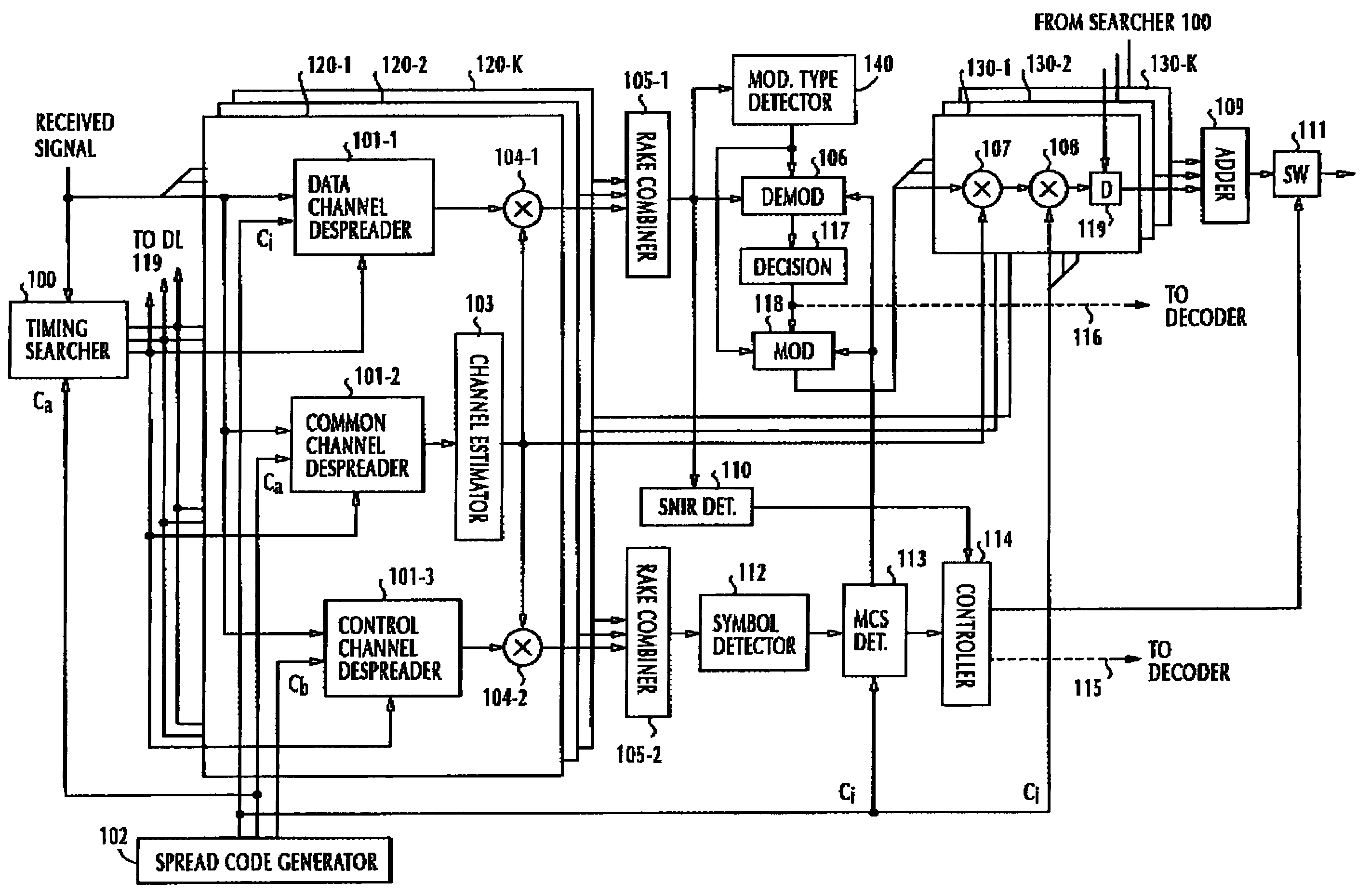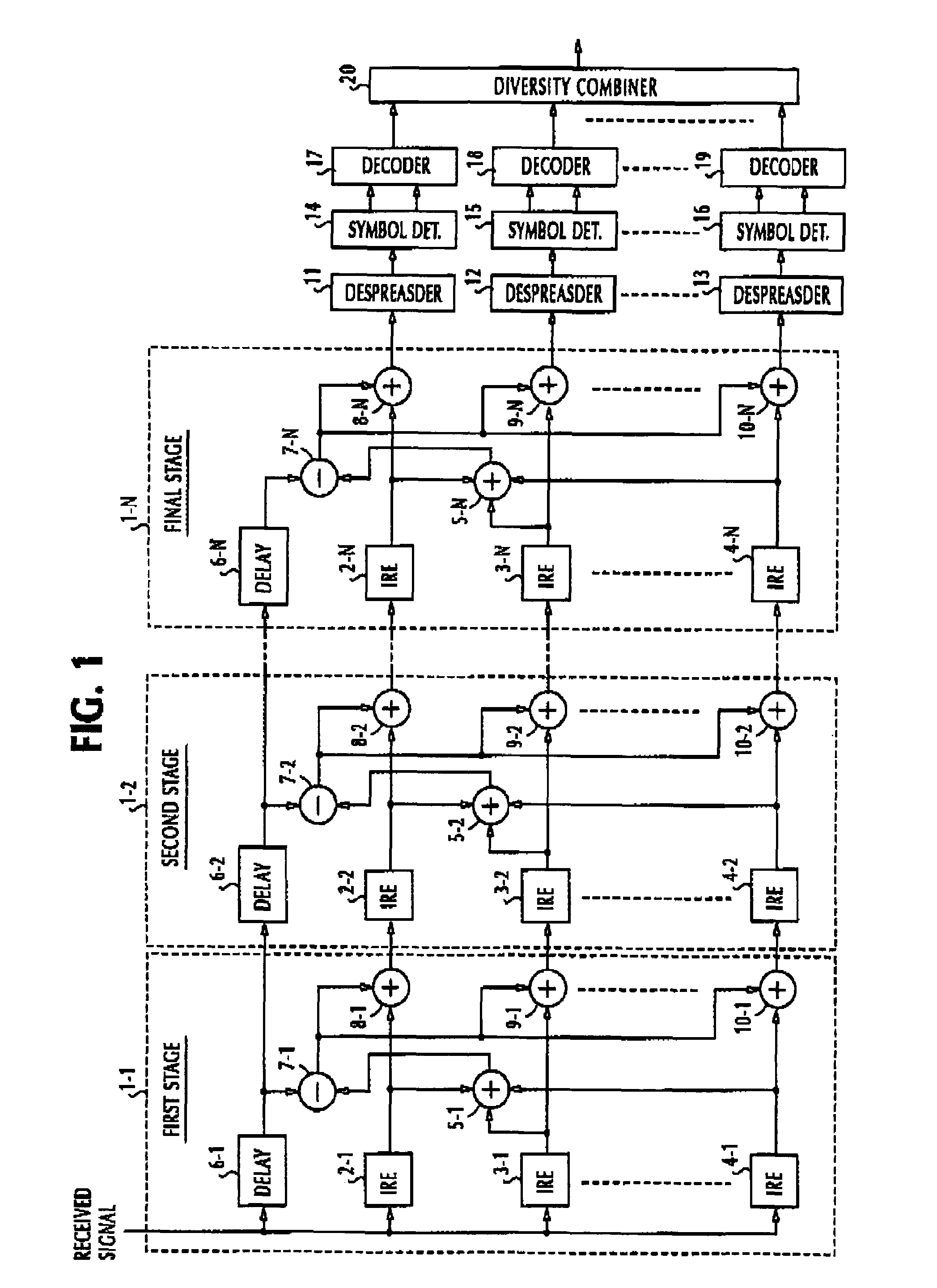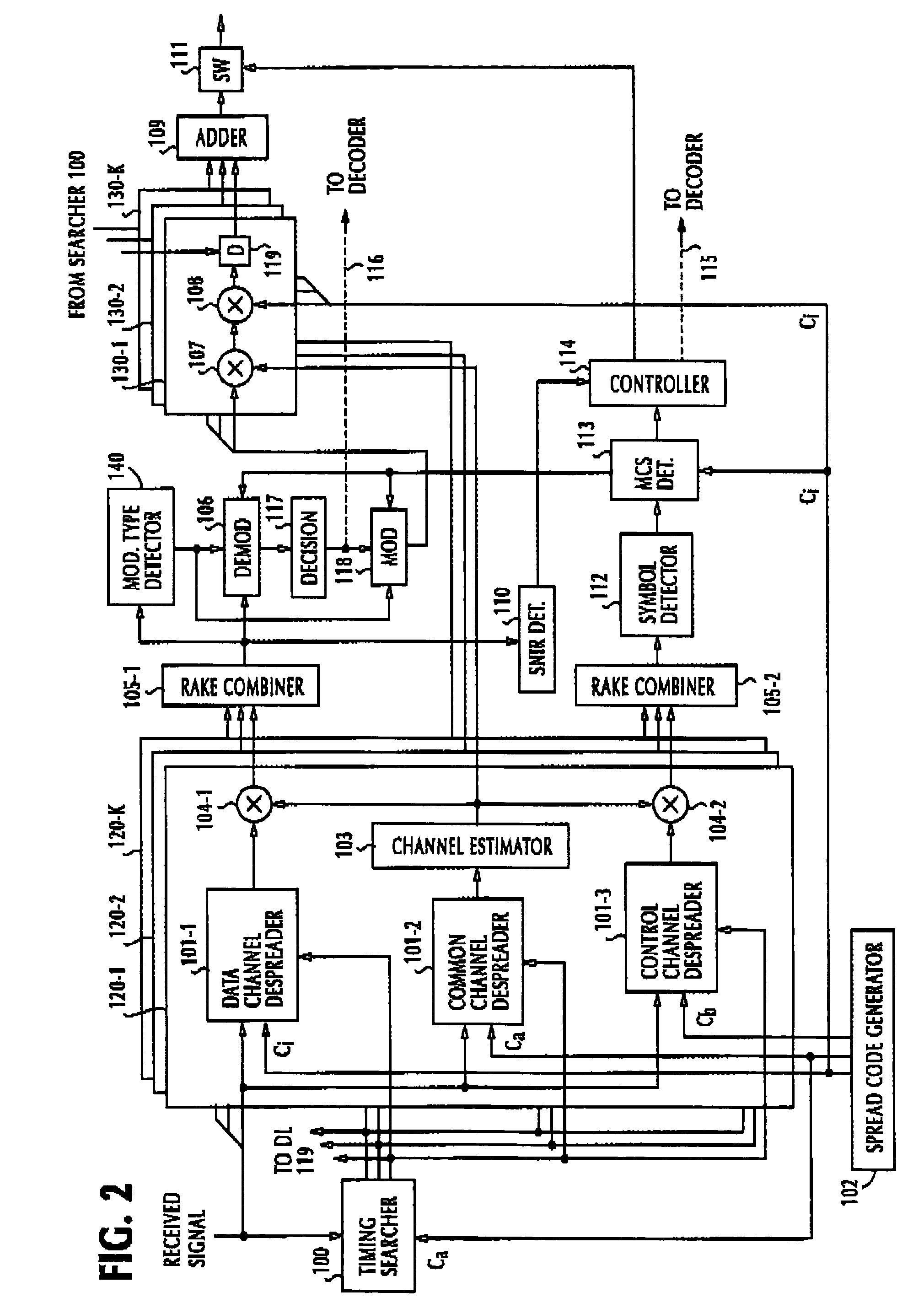Interference canceller for CDMA mobile stations
a mobile station and interference cancelling technology, applied in the direction of electrical equipment, transmission, etc., can solve the problems of causing interference on each mobile user, unable to know which spread codes are being used, and unable to be notified by each mobile user
- Summary
- Abstract
- Description
- Claims
- Application Information
AI Technical Summary
Benefits of technology
Problems solved by technology
Method used
Image
Examples
Embodiment Construction
[0017]Referring now to FIG. 1, there is shown a CDMA receiver for a mobile station, including a plurality of interference cancellers connected in successive stages. Each of the interference cancellers comprises a plurality of interference replica estimators (IREs) corresponding to a plurality of code diversity branches. The IREs are provided in number corresponding to the maximum number of spread codes which can be assigned to a mobile station. In the High Speed Downlink Packet Access (HSDPA) system of W-CDMA wireless interface, the maximum number of spread codes available for a base station to be assigned to mobile stations is fifteen. In order to operate the interference canceller in a “code diversity mode”, the base station assigns a varying number of spread codes to each mobile station depending on the volume of traffic, i.e., the number of mobile stations simultaneously communicating with the base station. Therefore, the mobile station may be assigned all fifteen spread codes i...
PUM
 Login to View More
Login to View More Abstract
Description
Claims
Application Information
 Login to View More
Login to View More - R&D
- Intellectual Property
- Life Sciences
- Materials
- Tech Scout
- Unparalleled Data Quality
- Higher Quality Content
- 60% Fewer Hallucinations
Browse by: Latest US Patents, China's latest patents, Technical Efficacy Thesaurus, Application Domain, Technology Topic, Popular Technical Reports.
© 2025 PatSnap. All rights reserved.Legal|Privacy policy|Modern Slavery Act Transparency Statement|Sitemap|About US| Contact US: help@patsnap.com



